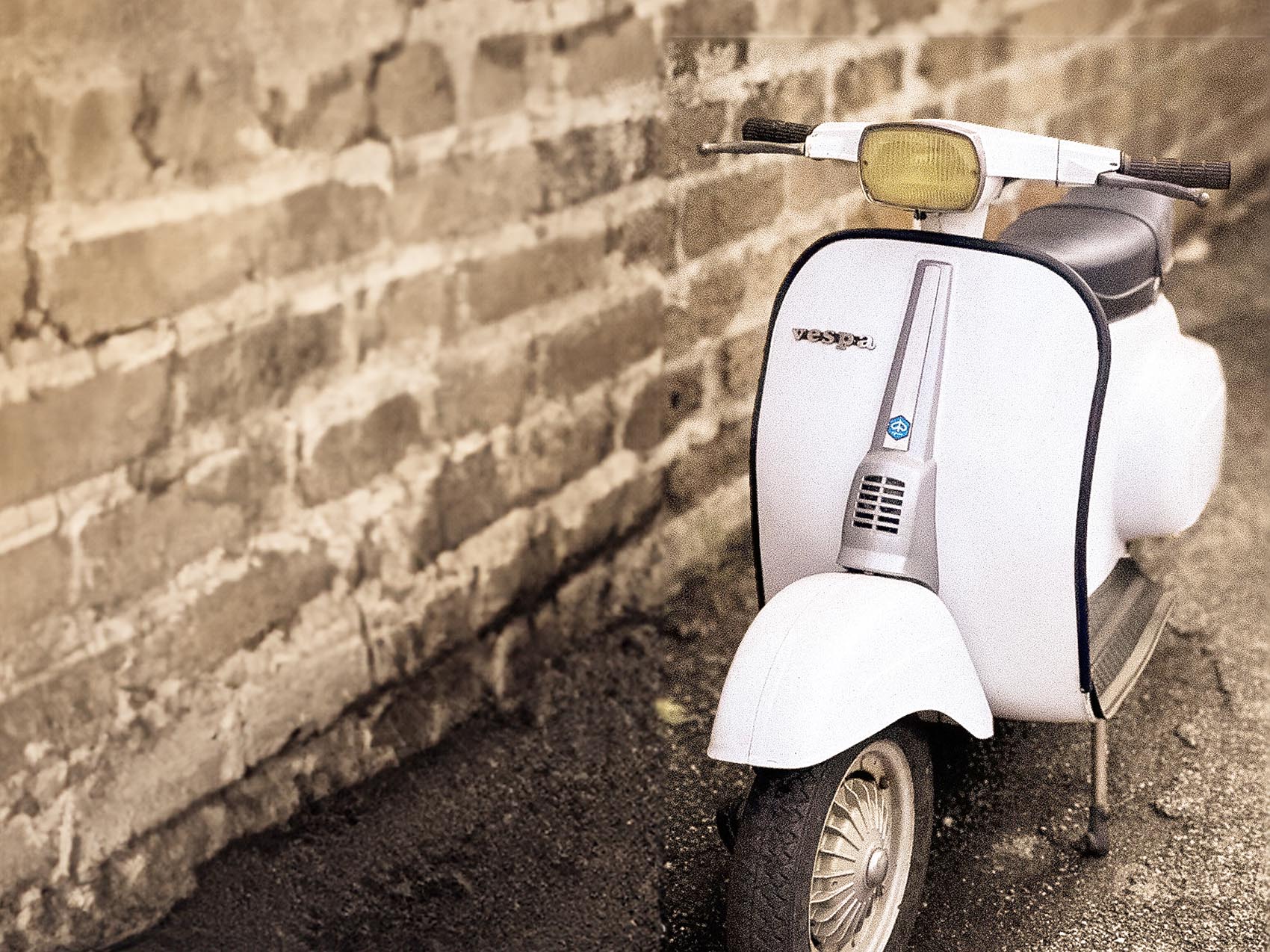THE ICONIC “VESPA”: BETWEEN THE PROTECTION OF 3D TRADEMARK AND COPYRIGHT PROTECTION
The long-running and complex dispute between the Tuscan company of the iconic “Vespa” and a Chinese motorcycle company, which the former accused of counterfeiting, has recently had important developments, both at national and European level. The General Court of the European Union has recognised the validity of the registered European trademark corresponding to the shape of the “Vespa” scooter on the ground of acquired distinctiveness. The EUIPO had erred in holding that the 3D trademark was invalid for lack of distinctiveness, in particular for not having correctly examined the relevant evidence adduced by Piaggio to prove that it had acquired distinctiveness through use. At the national level, the Italian Supreme Court addressed, among other issues, the interplay between different IP rights (copyright and three-dimensional trademark protection) and instead held that the shape of the “Vespa” could not receive protection as a three-dimensional trademark because it would be a «shape that gives substantial value to the product», and therefore, not registrable as a 3D trademark under the law. On this point, the Court of Appeal of Turin was called upon to express its opinion, to which the case returns for a new decision. It is therefore interesting to be noted that the two pronouncements, so close in time (28 and 29 November), are somewhat divergent: at the European level, the validity of the three-dimensional trademark was confirmed; in the opposite sense, the Italian Supreme Court expressed itself in relation to the corresponding Italian 3D trademark.
THE PROTECTION OF SHAPE AS A 3D TRADEMARK
On 29 November last, the General Court of the European Union (Case T-19/22) ruled in favour of the protection of the registered European trademark corresponding to the shape of the iconic “Vespa” scooter (hereinafter the “Vespa EU 3D Trademark”).
The decision agrees with Piaggio & C. S.p.A. (hereinafter “Piaggio”) stating that the evidence provided by the historical group of Pontedera (Pisa) is adequate and sufficient to prove the distinctive character acquired by the use (the so-called “secondary meaning”) of the Vespa EU 3D Trademark throughout the EU countries. Article 7(3) of Reg. No. 207/2009 (now Article 7(3) of Reg. No. 1001/2017 – “EUTMR”) states, in fact, that a registered European trademark cannot be declared invalid if, due to the use made of it, it has acquired distinctive character after registration.
In 2013, Piaggio had filed an application with the European Union Intellectual Property Office (EUIPO) to register the three-dimensional European trademark No. 011686482 (corresponding to the 2005 “Vespa LX” scooter model) for classes 12 and 28, “scooters” and “scale model of scooter”. After registration on 16 January 2014, Zhejiang Zhongneng Industry Group Co. Ltd (hereinafter “ZNEN”), applied to the EUIPO for a declaration of invalidity of the Vespa EU 3D Trademark. The EUIPO, on 25 October 2021 (Case R 359/2021-5), granted the application for lack of proof of distinctiveness – a decision against which Piaggio subsequently appealed before the General Court of the European Union.
The General Court (Third Chamber) proved EUIPO was wrong: the Vespa EU 3D Trademark is recognisable throughout the European Union.
Recognisable for: (i) the arrow-shaped front shield profile; (ii) the X between the lower edge of the saddle and the rear fairing; (iii) the inverted Ω recess between the saddle and the front shield; (iv) cheek of the rear bodywork shaped like an elongated teardrop.
But also for the presence of the “Vespa” at the Museum of Modern Art in New York (MoMA), the existence of “Vespa clubs” in numerous Member States, the use of the “Vespa” scooters in world-famous films such as “Roman holiday”, the recognition of the “Vespa” as one of the twelve objects that have marked world design over the last hundred years, as well as many other recognitions (e.g. the winning of awards, photographs in catalogues, publications and dedicated articles). These several relevant pieces of evidence demonstrate the iconic character of the “Vespa” and, therefore, its global recognisability throughout the Union.
In the course of the administrative proceedings before the EUIPO, Piaggio had also submitted data relating to sales volume, turnover, market share and advertising investments in the EU territory, as well as opinion polls carried out in twelve Member States (representing 83.43% of the European population) which showed, among the respondents, that there is an immediate recognition of the commercial origin of the shape represented by the Vespa EU 3D Trademark – whose essential features have remained the same since 1945 – as compared to other shapes of scooters.
As a result, by cancelling the registration of the Vespa EU 3D Trademark, according to the General Court, EUIPO committed an error in assessing these elements. Therefore, the General Court cancelled the declaration of invalidity by EUIPO.
DESIGN PROTECTION UNDER COPYRIGHT LAW AND ITS COMPATIBILITY WITH SHAPE PROTECTION AS A TRADEMARK
At the national level, on the other hand, in the specular case between the same two opposing parties, the Italian Supreme Court, on 28 November last (decision No. 33100/2023), ruled on the validity of the corresponding Italian three-dimensional trademark “shape of scooter” (No. 0001556520, registered on 29 August 2013 – hereinafter the “Vespa Italian 3D Trademark”).
it is interesting to consider that, unlike the case before the EU Court, the distinctive character (whether inherent or acquired) of the Vespa Italian 3D Trademark was not an issue of the litigation.
The Supreme Court addressed, among other issues, the interplay between different intellectual property rights (in this case: the protection of a shape trademark and the protection of copyright), whether the three-dimensional shape of a product, which is also considered to be a work protected by copyright, can be registered as a trademark. In particular, does the validity of the Vespa Italian 3D Trademark preclude the provision of law according to which «signs which consist exclusively of: …the shape or other characteristic which gives “substantial value” to the product may not be registered as trademarks» [see Article 9(1)(c) of the Italian Industrial Property Code; provision derived from Article 4(1)(e)(iii) of Directive (EU) 2436/2015; and Article 7(1)(e)(iii) of the EUTMR].
The case moves from the judgement no. 1900/2017 of the Court of First Instance of Turin, upheld by the Court of Appeal of Turin (decision no. 677/2019), which had confirmed both the validity of the Vespa Italian 3D Trademark and the protection of the shape of the “Vespa” pursuant to Article 2(10) of the Italian Copyright Act (Law no. 633/1941) as a work of industrial design, having per se “creative character” and “artistic value”.
The Supreme Court, in turn, held that the copyright on the shape of the “Vespa” subsisted and was proved, since this shape, which originated as an object of industrial design, had acquired over decades, through collective recognition by cultural and institutional circuits (e.g. display in exhibitions and museums, publication in specialised magazines, the awarding of prizes, etc.), an “artistic value” that exceeds its technical and functional character, as well as possessing the characteristic of creativity.
On the matter of the 3D trademark, however, the Supreme Court took a different view from the lower courts. To tackle this issue, the Supreme Court recalled that in relation to an object of design, which enjoys copyright protection, the recognition of “artistic value” generally also implies the attribution of that “substantive value”, which precludes the registration of the shape as a trademark, according to what has also been decreed by the most recent European case law (Case C-237/19 – Gömböc, Case C-205/13 – Hauck, Case T-508/2008 – Bang and Olufsen).
“Substantial value” means a «non-trivial aesthetic value» which is such as to make the shape of a product a symbol or, even, a social icon and make the good on which it is affixed particularly attractive. In essence, «the external appearance of the product must be characterised by an “appeal” capable of influencing or even determining the purchasing choices of the public, so as to be capable of giving a competitive advantage to its owner».
Instead, the appeal judges had stated that the presence in a scooter model of «undoubted aesthetic and artistic qualities» does not automatically determine its nature as a «shape that gives substantial value to the product» and that therefore the well-known Italian scooter is not purchased primarily for its aesthetic characteristics, but also and fundamentally for its technical characteristics and its reliability and safety performance.
On the contrary, the Supreme Court has stated that «there is “substantial value” when the shape of the product is an element – though not the only one – that plays a “very important” role in the consumer’s choice». The notion of “substantial value” is thus not limited to purely aesthetic objects, but it being applicable to objects that combine «aesthetic and technical-utilitarian characteristics».
All the above considered, the Supreme Court on these grounds ruled out the overlapping of the protection of the Vespa Italian 3D Trademark with the protection of the shape of the “Vespa” and, therefore, sent the case back to the Court of Appeal for a fresh assessment in order to determine whether the shape of “Vespa” confers “substantial value” to the goods to which such shape is applied.
COMMENT
It is interesting to note the dissonance of the two rulings under examination (that of the EU Court and that of the Italian Supreme Court). At the European level, the cumulability of protections for the same shape was confirmed: that of the 3D trademark and that of the copyright. In the opposite direction, the Supreme Court expressed itself by considering that the shape of the “Vespa” cannot receive protection as a three-dimensional trademark.
This Italian case contributes to the context of the debate on the protection of shapes by means of different sets of IP rights, as it affirms – albeit questionably – that the protection conferred by the industrial design, which is protected by copyright, cannot be flanked by 3D trademark protection.
The Supreme Court in a certain sense seems to consider that copyright protection coincides with the intrinsic aesthetic value of a product, while “substantial value” means that the shape of a product is able to remain so imprinted in the consumer’s mind as to have a “substantial” influence on its choice in purchasing the product. Relevant EU case-law on this point is the one of the iconic loudspeakers (Beolab 8002) of the company Bang & Olufsen (Case T-508/2008). The registration as a trademark the 3D shape of the product in question was prevented on the grounds that it consists exclusively of the shape that gives it “substantial value”. In particular, the EU General Court observed that the design, for that loudspeaker, is an element that constitutes a fundamental asset that favours its sale.
However, in the case commented on here, in my opinion, the Supreme Court did not correctly distinguish between whether the “substantial value” derives directly from the intrinsic value of the shape or from the fame and commercial success of the “Vespa” acquired over a very consistent period of time, also as a result of the promotional strategies made by Piaggio that have made it an icon-symbol of Italian custom and design. Therefore, in this second scenario, it would be appropriate to grant the shape of the “Vespa” registration as a 3D trademark to protect the competitive advantage thus obtained by the Tuscan company. In fact, obtaining protection as a trademark for an iconic and timeless shape such as the “Vespa” would mean being able to add a potentially perennial right to time-limited protections such as copyright – up to seventy years after the author’s death – and thus a more effective tool against counterfeiting.







